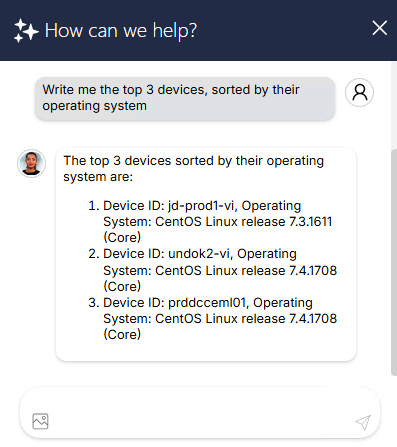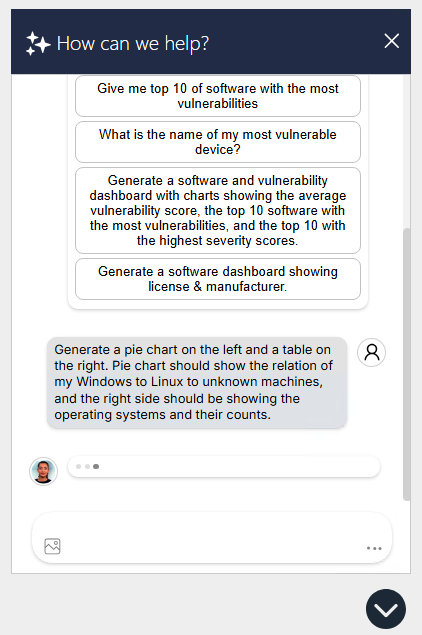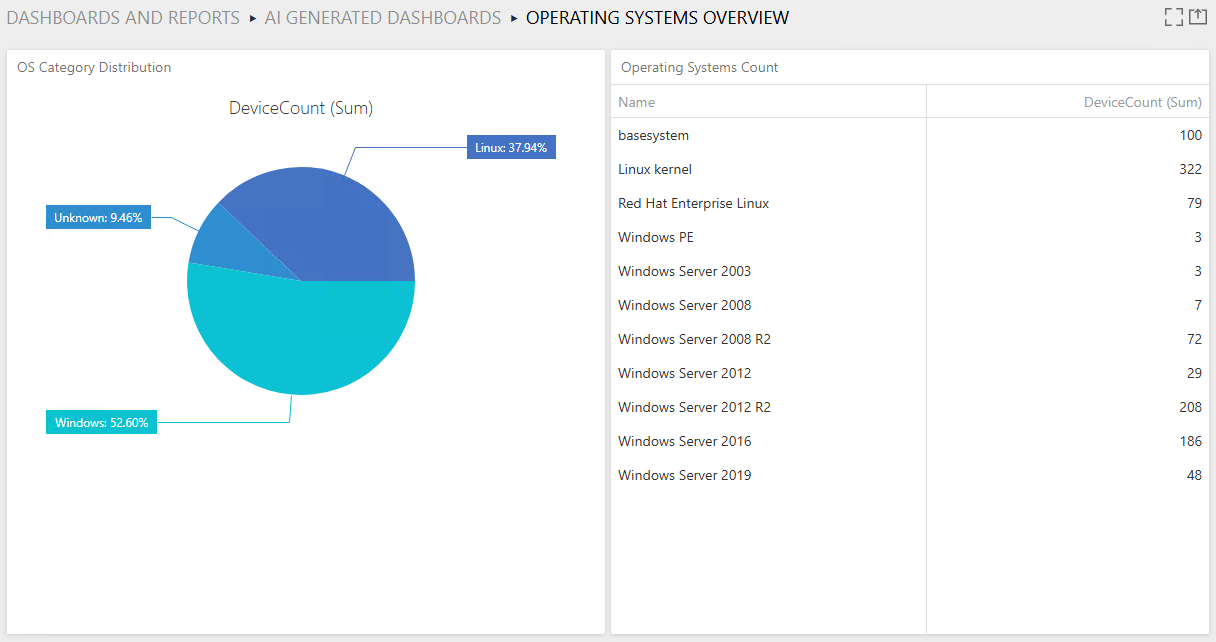Raynet One Data Hub features an AI-driven assistant that seamlessly integrates natural language processing with interactive dashboards. This intelligent assistant supports both text and image inputs, delivering real-time insights or dynamically generated visualizations based on your queries.
|
Note: The AI assistant must be configured before use. Follow the step-by-step instructions in the Enabling AI assistant section. |
Getting Started
To activate the AI assistant, click its icon in the bottom-right corner of the screen.

This opens a chat window, allowing direct interaction with the assistant. From here, you can use two primary modes of interaction:
Simple prompts
Use simple prompts to ask for quick facts, numbers, or lists. The assistant provides instant responses directly in the chat window.
Examples:
•"How many devices are currently reported?"
•"Which software has the most vulnerabilities?"
You can refine the conversation by asking follow-up questions for more details.

Complex prompts
Use complex prompts to generate detailed, interactive dashboards. Simply describe your needs, and the AI will generate a ready-to-use dashboard.
Examples:
•"Create a dashboard showing the top 10 most vulnerable applications by severity and affected devices."
•"Provide a grid with Windows devices and the following columns: name, domain, FQDN"
Here is yet another example:

Once done, the following output is shown:

The AI assistant can also interpret image-based inputs—for example, you can upload a sketch of the desired layout, and the assistant will generate a dashboard accordingly.
All AI-generated dashboards are automatically saved under: Data & Visualization > Dashboards & Reports > AI generated dashboards.
How it works?
The assistant utilizes OpenAI’s Large Language Models (LLMs), a family of advanced generative AI models. Data Hub interacts with OpenAI’s API, consuming tokens based on the amount of processed text. However, token usage is typically minimal, resulting in low costs. You can monitor your exact usage and expenses via your OpenAI account.
Data Privacy & Security
When interacting with the AI assistant:
•Only metadata (such as available tables, columns, and a few sample rows) is sent to OpenAI.
•Full datasets are never transmitted—actual data processing happens on-premise.
•Machine learning models are used to determine the best way to generate responses while maintaining data security.
This ensures that your sensitive information remains protected while leveraging AI-powered insights.